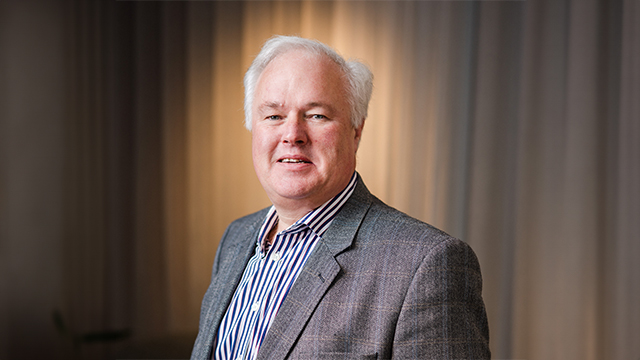It’s all change at the top of this year’s Estates Gazette property Power List. New players from the UK and overseas are taking their place at the top table as several powerhouse stalwarts miss out on a place in the top 50 for the first time. Read on to find out who’s in and who’s out
In the property power stakes, this looks set to be the year of the newcomers. After 12 months of ups, downs, jostles and shifts, the 2013 Estates Gazette Power List is a who’s who of the industry’s fresh talent and shiny new investors.
Most interestingly, these guys are not making their league debuts just anywhere on the list – they are coming in straight at the top.
Half of this year’s top 10 entries are in the 50-strong list for the first time in its three-year history as the fast-changing worlds of TMT, finance and investment are already being represented at the pinnacle of the rankings.
And with so much fresh blood rushing in, both from the UK and overseas, some industry stalwarts have been bumped off the list for the first time. Proof, if more was needed, that the traditional profile of the sector’s most influential figures has shifted dramatically.
This year we have ranked the most powerful players in the UK property sector based on nominations from 20 senior industry figures, before analysing the shock omissions, the rise of the new brooms and a very international influx.
50 “Spider-man”
Daredevil trespasser Alain Robert, the French daredevil who has gained notoriety scaling skyscrapers across the globe without safety gear, has become a ticket to the headlines for a lucky few developers. The Shard’s owners weren’t impressed – they slapped the human spider-man with an injunction to keep his distance, but his feats include scaling the world’s tallest building – the 2,717 ft Burj Khalifa in Dubai and the 1,667 ft Taipei 10. Walkie Talkie next?
49 Sir Howard Bernstein, chief executive, Manchester city council
This is the year that Sir Howard could really start to make his mark outside of his native Manchester as he is increasingly working in London’s West End, advising on growth strategies. He also has ambitions for Manchester to become the UK’s Silicon Valley, pushing the creative sectors, bio-tech and science as the city’s new frontiers.
48 Mark Prisk, housing minister
Prisk was catapulted into the eye of the storm last September when he was made minister for housing in a cabinet reshuffle. The former construction minister worked in property for 10 years, including a stint at Knight Frank, before entering politics, and is now leading a raft of initiatives to boost the sector, including a £10bn guarantee scheme and a £200m build-to-rent fund. His new position puts him in a better position than ever to make a real impact.
47 Andrew Radkiewicz, co-head of European lending, Pramerica Real Estate Investors
Pramerica is one of the international heavyweights of the real estate world, with assets of $51.2bn. Radkiewicz was head of blue-blooded bank Rothschild and is now raising for two UK debt funds, and in an increasingly crowded market of aspiring debt investors, finds himself hotly tipped as one of the elite who will be able to bring in capital this year.
46 Emma Crawford, proprietary partner, Knight Frank
Considered one of the best offices agents in London, Crawford was poached by Knight Frank from CBRE, where she was director and head of the West End team, in January. All eyes will be on her as she makes the move across to see whether she can make the same impact in a new firm.
45 Peter Denton, head of European debt, Starwood Capital
Denton was hired from BNP Paribas last year to spearhead a £1bn European debt fund. It was announced in December that Starwood European Real Estate Finance was launching an initial public offering to raise gross proceeds of nearly £230m following the launch of an unlisted European real estate jv with Cushman & Wakefield Investors. As the person heading the fund, Denton is one of the key debt men to know in 2013.
44 Paul Brundage, executive vice-president, Oxford Properties
The man who set up Oxford Properties’ London office had a busy year. Last July it was announced the group was to partner with Brookfield Office Properties to develop London Wall Place in the City and in November it was revealed the group had bought CBRE’s London HQ for £110m. With the Canadian parent company showing no signs of slowing down investment into London, Brundage’s role is only set to become more high-profile this year and beyond.
43 Eric Pickles, secretary of state, Department for Communities and Local Government
Pickles faces a crucial battle over the next 12 months to persuade key detractors to support his view that developers should be able to convert offices to homes without planning permission. The communities secretary first mooted the plan in February 2011, but it was halted amid opposition from the likes of City of London planning chief Peter Rees. Not to be deterred, Pickles announced in January that he would press ahead with his proposals.
42 Bill Oliver, Chief executive, St Modwen
Earlier this year the joint venture between St Modwen and Vinci signed a contract for the £2bn regeneration of New Covent Garden Market in Nine Elms, SW8, after a year of negotiations. Oliver has worked tirelessly to get the deal over the line, and his profile will climb further as the overhaul of the 57-acre site begins.
41 Alison Munro, Chief executive, HS2
As HS2 gathers pace – transport secretary Patrick McLoughlin reaffirmed his commitment to the scheme last month by hailing it as “an engine for growth” – chief executive Alison Munro will become an increasingly important figure for the London and regional property markets. A former director in the department for transport, as the HS2 plan moves increasingly from theory to practice, Munro will be expected to show she is as on the ball when it comes to property as she is on policy.
Five most powerful women in property
1 Liz Peace, chief executive, British Property Federation
2 Alison Nimmo, chief executive, The Crown Estate
3 Anne Kavenagh, global head of asset management, Axa Real Estate
4 Mary Portas, retail tsar
5 Alison Munro, chief executive, HS2.
40 Mary Portas, retail tsar
The Portas Pilots initiative has come in for a mauling from Rochdale boutique shop owner Paul Turner-Mitchell after he revealed that only 12% of the first wave of Portas Pilots money has been spent so far, with the bulk of it on bureaucracy and admin costs. With Portas’s name pinned against the rescue of the high street, can she pull it off? Her influence is still there, as long as she can find the right way to wield it.
39 David Porter, corporate vice-president of retail stores, Microsoft
Porter is the man leading Microsoft’s push into shopping malls. The technology giant will soon have more than 70 stores in the US and Canada, but Porter has ambitions to grow further. With a strategy to open near Apple stores, of which there are around 300 globally, that push could see the former Dreamworks Animation and Wal-Mart executive cross the Atlantic. Watch this space.
38 Sir George Iacobescu, chairman and chief executive, Canary Wharf Group
Canary Wharf Group looks set for another significant year – not least because passenger platforms for the Crossrail Canary Wharf station will begin construction in the summer. But Iacobescu’s remit is not just in the east of London, as the group is also a joint venture partner with Qatari Diar in the Shell Centre Tower redevelopment on the South Bank.
37 Mike Hussey, chief executive, Almacantar
Hussey is poised to submit revised plans for redevelopment of the iconic Centre Point, WC1, into a residential tower, and worked alongside Chelsea Football Club on its bid to build a stadium on the Battersea Power Station site, SW8. With other famous London landmarks under his belt, such as Marble Arch Tower, Hussey brings a twist of excitement to transforming the skyline.
36 Goodwin Gaw, chief executive, Gaw Capital Partners
An Asia Pacific investor with the backing of a consortium of Korean institutions, Gaw is one to watch. To date he has raised three real estate funds with combined total equity commitments exceeding $1.5bn and total assets of more than $6bn. His firm made its European debut with the £150m purchase of Vintners Place, EC4, last summer. All the London market can do now is wait with bated breath to see what the real estate fund manager will do, or rather invest in, next.
35 David Partridge, chief executive, Argent
Last May, Argent Group announced it was restructuring as a limited liability partnership, with former joint chief executive Partridge taking a new role as managing partner. The upshot of the move will allow Partridge to step back from being the go-to man for all things King’s Cross – Argent’s flagship 67-acre scheme – to focus on the group’s plans across the board.
34 Anne Kavenagh, global head of asset management, Axa Real Estate
Axa Real Estate, which has €45bn of assets under management globally, is warming up to the real estate debt space and could be a big lender in 2013. Kavenagh, who has more than 27 years’ experience and was in charge of real estate at Lazard, is well placed to be one of 2013’s most influential women in property.
33 Dennis Hone, chief executive, London Legacy Development Corporation
When it comes to east London powerhouses, Hone is right up there. He is responsible for overseeing the development of five new neighbourhoods in the Queen Elizabeth Olympic Park, including 7,000 homes, and ensuring the successful tenures of high-profile park tenants such as West Ham United football club at the Olympic stadium and iCITY at the 1.2m sq ft media centre.
32 Ian Hawksworth, chief executive, Capital & Counties
Hawksworth’s plan to transform Earl’s Court into West London’s newest urban quarter gained momentum during 2012 with Hammersmith & Fulham council’s planning committee resolving to grant outline planning permission for the project in November. Meanwhile, Capco’s Covent Garden estate performed well as equity placing raised £149m to fund further growth.
31 Alison Nimmo, chief executive, Crown Estate
An impressive first year for Nimmo, who joined the Crown Estate on 1 January 2012. The estate has already received backing from Westminster city council for the £450m transformation of St James’s in 2013, while in the past 12 months, under Nimmo’s leadership, the firm secured top tenants for its AirW1 scheme, such as Telefónica UK.
30 Chris Grigg, chief executive, British Land
Grigg has made it clear he has no intention of slowing down in London, with a planned shift in focus on acquisitions from the City to London’s West End. He has already overseen high-profile purchases including the Clarges Estate in Piccadilly, W1, for £129.6m, and the REIT has just made a five-strong shortlist to acquire the sought-after Moxon Street car park site in Marylebone.
29 David Marks, co-founder, Brockton Capital
When the youthful co-founder of Brockton Capital takes over as British Property Federation president later this year from British Land chief executive Chris Grigg it will be a changing of the guard at the very top of the property industry. And with assets including the £40m Camden Lock Market already signed and sealed, all eyes will be on Marks’ next trophy acquisitions.
28 John Slade, chief executive, BNP Paribas Real Estate
The veteran deal maker arrived at the top job at BNP Paribas Real Estate last year vowing to reshape the firm and almost double turnover within four years. The ex-head of Accrue Capital spent 2012 getting his ducks in a row with the help of an open chequebook to get the best talent – a strategy that has already paid off, with some key appointments under his belt.
27 Andrew Jones, chief executive, LondonMetric
A key player behind newly formed LondonMetric, Jones spent 2012 bringing together the successful merger of London Stamford and Metric Property to create a top-10 REIT with a £1bn property portfolio. Immediately after the merger, LondonMetric exchanged contracts to buy a portfolio of six retail warehouses from Aviva Investors for £92.4m, a 7.8% yield, a first step in its bold retail distribution strategy.
The rise of the internationals
This year’s Power List is top-heavy with overseas entries. Out of the top 10, nearly half are international. Just behind the Malaysian and Chinese investors – coming in at numbers two and seven respectively – the Qataris are at number 11. The new governor of the Bank of England, Mark Carney, is a newcomer at number three and a Canadian. Blackstone Europe’s Chad Pike, originally from the US, completes a multinational top end to the league table. The influx shows just how vital overseas input into the UK economy and property sector is likely to be in 2013 compared to even a year ago, as investment from newcomers such as Malaysia, South Korea and Thailand is on the rise.
26 David Atkins, chief executive, Hammerson
After a “transformational” year for Hammerson in 2012, this year began with a bang in January when the group settled its long running argument with Westfield and teamed up to bring forward a £1bn regeneration of south London town Croydon. Atkins predicted in February that 2013 will see retail spending soar. As he continues to re-nose the business to become a pure retail-focused outfit, Atkins deftly combines power with pragmatism.
25 John Burton, director of development, Westfield
Burton spearheaded the development of Westfield’s flagship mall in Shepherds Bush, W12, and the Olympic shopping centre, Westfield Stratford City, E20. The Australian retail giant is now heading down to south London after striking a deal with Hammerson to redevelop the highly contested Croydon town centre – leaving just the north of the capital without a Westfield footprint. After selling off its half shares in regional UK shopping centres to Hermes Real Estate, Burton is focused on developing the malls of the future.
24 Andy Street, managing director, John Lewis
The down-to-earth chief of John Lewis has steered the department store retailer through choppy water over the past few years. As the internet tore through bricks-and-mortar sales, he guided John Lewis into a safer position by creating a multi-channel retail model and flexible store formats and providing good old-fashioned customer service. He even allowed TV cameras to snoop behind the scenes for a documentary on the retailer. It seems to have paid off, with continued demand from landlords for its shopping centres and parks. His results are the sector’s bellwether.
23 Karsten Kallevig, global head of real estate asset strategies, Norges Bank Investment Management
Kallevig, the man tasked with leading NBIM’s real estate drive, has already demonstrated both the appetite and the eye for the big transactions and this year will likely see few more high-profile deals than the anticipated sale of British Land’s 50% stake in the Broadgate Estate. The bank’s fund has also taken in a 25% stake in Regent Street (£448m), a 50% stake in Meadowhall (£762m) and most recently, a $1.2bn joint venture with US pension fund manager TIAA-CREF.
22 Sean Mulryan, chief executive, Ballymore
The famously secretive Irishman heading Ballymore claims that his company now owns more land in London than any other private developer and that his Embassy Gardens scheme in Vauxhall was the fastest selling residential project of 2012. He expects Ballymore to be one of the first firms to emerge from Nama unscathed by 2016. With a land bank to accommodate 20,000 homes in London – 90% of which will be by the water or a major transport link. It’s the quiet ones…
21 John Whittaker, vice-chairman, Intu
Whittaker has steadily built a controlling influence at Intu Properties, formerly Capital Shopping Centres, since selling the Trafford Centre to CSC for £1.6bn in January 2011. His firms are renowned for their fresh approaches, evidenced by CSC’s recent rebrand as Intu with the roll out of WiFi and mobile-enabled shopping at its 12 malls – soon to be 13 if a £250m deal for Midsummer Place in Milton Keynes from Legal & General Property completes.
20 Boris Johnson, mayor of London
Some may question how much real power Boris actually wields. But the vaulting ambition and powers of persuasion that saw him re-elected in May 2012 mean he is still in a position to make decisions in the capital that will have an impact on property. He has challenged central government on airport policy, stamp duty proceeds and office-to-resi policy to ensure London remains a “colossal powerhouse of jobs and growth”, no doubt with himself and his £15bn budget at the helm.
19 Liz Peace, chief executive, British Property Federation
Once again the most powerful woman in UK property, Liz Peace remains one of the industry’s most active campaigners and lobbyists. She has spent the past decade working tirelessly to represent the property and investment sectors at government level and has the clout to make a difference. The BPF’s focus points include championing the case against empty rates, securing a fair deal for unsecured creditors, fair commercial leases and reducing service charge costs.
18 John Burns, chief executive, Derwent London
The developers’ developer has leapt 28 places since last year’s entry in the Power List, thanks to 12 spectacular months for Derwent London. The firm, which owns Burberry’s Victoria HQ and the Tea Building – home to Shoreditch House – will take over Saatchi and Saatchi’s Charlotte Street HQ this month. The £125m redevelopment will create 367,000 sq ft of commercial space, on which Burns is determined to achieve a 5% yield.
17 Tony Pidgely, group chairman, Berkeley Group
Britain’s most influential housebuilder continues to capitalise on strong demand for residential property in London. Berkeley has reported a 41% rise in half-year profits to £142.2m (to October 31 2012), paying an interim dividend of 15p a share, and planning to return £568m in cash to shareholders by September 2015. Newly decorated with a CBE, Pidgley is now shelling out to acquire sites along the south bank of the Thames.
16 Martin Jepson, senior vice-president of development and investment, Brookfield Office Properties
Brookfield completed the headline deal of 2012, reuniting Jepson with the £518m Hammerson office portfolio. The question for this year will be what he does with it. Brookfield’s London portfolio now contains three of the biggest development opportunities in and around the City and with the Pinnacle stalled and space filling up rapidly in the Square Mile’s other towers, 2013 could be the year of Brookfield as the pace-setting London developer.
15 Neville Kahn, vice-chairman, Deloitte
Neville Kahn has made his name as Deloitte’s restructuring man. He has presided over some of the UK’s most high-profile retail collapses, including Woolworths, Barratts Shoes and, most recently, HMV. Kahn started off his accountancy career with 20 years at rival firm PwC before crossing over in 2001. With the UK economy sitting in a precarious balance, his expertise is likely to remain in demand for some time to come.
14 Nick Boles, planning minister
Since taking on his new role following the cabinet reshuffle of September 2012, Boles is making his mark. He has made no secret of his view on the controversial subject of building in the green belt, arguing that an area the size of Greater London – around 1,500 square miles – will have to make way for homes if the UK’s housing needs are to be met.
13 The new top agents – Guy Grainger at Jones Lang LaSalle, Ciaran Bird at CBRE and Alastair Elliot at Knight Frank
It is the turn of the younger guard to take the helm at some of the UK’s best-known agencies. All three men are dramatically different from their predecessors and each will have a point to prove at the top, so expect big things. Grainger and Bird are both retail experts flung into managing multi-sector businesses, Elliot, king of KF’s commercial business, will now have to be the archetypal estate agent at the nation’s poshest surveying firm. With spark, hunger and cash behind them, expect these three to lead the agency world.
12 Richard Dakin, Lloyds
Dakin is the man at Lloyds running its corporate real estate business support unit, supporting property customers who are having financial difficulties. This year Lloyds is expected to offer several more loan portfolios for the work-out specialists. More than half its £60bn global property loan book is in the UK, so Dakin will once again be one of the property sector’s most powerful money men.
11 Qatari Investors
Still up there, but just out of the top 10 this year, it has been a mixed 12 months for Qatari investment into London. Still officially the richest country in the world per capita, Qatar, led by prime minister Hamid bin Jassim (pictured above), is home to the owners of 80% of the Shard, all of Harrods, and the US embassy in Mayfair. They are co-owners of the Olympic village and the Shell Centre. But in January it was announced that Qatari Diar had placed its investment into the £3bn Chelsea Barracks housing development on hold due to the “prevailing economic environment”. Nevertheless, work should start this year.
Gone but not forgotten – five surprise omissions
The property industry has changed dramatically since the boom times, leading to a shift in the balance of power. And as it works its way out of the dip, a new broom has been installed at the top. That means this year’s Power List has a few notable absences.
1 Gerald Ronson, Heron International
A name synonymous with property for decades and one that has always ranked highly among the great and good, While his Heron Group continues to develop – The Peak, The Heron Tower and The Heron – the name is mentioned less, quietly getting on with its own business.
2 Irvine Seller, Sellar Properties
He has completed London’s tallest tower, but with a new man – Michael Baker, formerly of Hammerson, Grosvenor, Quintain and HDG Mansur – set to take over the asset management of the London Bridge development we may see Sellar start to step back.
3 Patrick Vaughan and Raymond Mould
The duo perfectly called the market through a number of downturns, selling their businesses and making a packet many times over. Now they have done it again and handed the reins of their latest incarnation, London & Stamford, to former right-hand man Andrew Jones.
4 Mike Slade, Helical Bar
The skipper of the good ship Helical Bar (and Mr Land Aid) is still present in the market but, like his contemporaries, must also step aside to let the new crew through.
5 Stephen Hester, Royal Bank of Scotland
The RBS chief executive is also out this year. Unlike rival lender Lloyds, RBS has been slow at offloading its non-core real estate loans and with little sign of comparable action this year, EG wonders whether investors would be better staying focused on Lloyds and Nama.
10 Chad Pike, senior managing director, Blackstone Europe
The man with the money who is not afraid to go fishing for a big deal, Chad Pike, senior managing director of Blackstone Europe, has been and will be involved in some of the biggest deals in the UK. Cash raised from a potential sale of its 50% stake in the £3bn Broadgate Estate is sure to be re-invested and Pike likes chunky, trophy assets. Don’t expect little plays, this firm wants to land a prize-winning catch. And with a new head of its European industrial business LogiCor in Mo Barzegar, that spending will not be contained to London offices.
9 Joe Borrett, head of real estate and construction, EMEA, Google
Borrett has long been one of the most talked about TMT men in property but since the announcement that Google is to build a new £1bn UK HQ at King’s Cross, his power credentials have soared. Construction is due to start on site at the end of the year for completion by 2016. Borrett will be at the heart of one of London’s most high-profile mega developments for the best-known company in one of the fastest-growing sectors in property.
8 Brendan McDonagh, chief executive, Nama
The man heading Ireland’s bad bank, all eyes will be in McDonagh this year as he will be at the heart of the clean-up of Ireland’s dramatic property crash, in charge of the bank’s massive €74bn book of loans and properties. Arguably the most powerful man in property finance this year.
7 Yin Yong, director at Gingko Tree and director general of the State Administration of Foreign Exchange of China’s department of reserve management
Gingko Tree Investment Management has invested more than £1bn in the UK, including offices in London and Manchester, and stakes in student housing provider UPP and water company Affinity. But this is the tip of the iceberg. Yin Yong sits on the board of both Gingko Tree and ultimate owner the State Administration of Foreign Exchange, the body responsible for investing most of China’s $3.31tn (£2.2bn) foreign exchange reserves, the largest in the world.
6 George Osborne, chancellor of the exchequer
This will be a vital year for Osborne – the most powerful man in politics for the property sector and in the top 10 for the second year running. He is in the strongest position to influence the legislation under which the property world operates. His role this year will be even more important as he struggles to restore investor confidence in the UK economy and the UK property market. A make-or-break year for the chancellor.
5 Jamie Ritblat, chairman and chief executive, Delancey Estates
To say Jamie Ritblat doesn’t court publicity would be an understatement. But he has built a reputation for quiet effectiveness and become one of the most keenly watched developers in the capital. Best known for acquiring Minerva two years ago, Ritblat is now turning the Olympic Village into private housing which will help determine the success or otherwise of the Olympic legacy as well as being a key test for the private rented sector model.
4 Rob Noel, chief executive, Land Securities
A year in the top job at Land Securities and Rob Noel is making his mark. In two weeks he will open the only new shopping centre to debut in the UK this year, Trinity Leeds. Just 24 hours later he will be in Glasgow opening 185-221 Buchanan Street. Meanwhile, the REIT’s transformation of Victoria continues, and a considered push into residential is under way.
3 Mark Carney, new governor of the Bank of England
The Canadian former Golden Sachs man headhunted by George Osborne to succeed Sir Mervyn King after a decade in the role has a lot to prove. Already being hailed as the Don Draper of the banking world, the heavy metal fan has been praised for his handling of the Canadian banking system during the global economic crisis and the hope is that he can bring his Midas touch across the Atlantic. Unwinding debt and rebuilding confidence will be the keys to recovery. All eyes will be on Carney to see what he does on both counts.
2 Malaysian investors
After Malaysian consortium SP Setia, headed by Liew Kee Sin, paid £400m for the Battersea Power Station site in June – one of the most high-profile deals of the year – the power of Malaysian investors in the London property sector ratcheted up several notches. Half of all Asian money coming into the UK in 2012 came from Malaysia, and deals on the horizon for 2013 include negotiations by KWAP to buy £220m 88 Wood Street, EC2, from Korea’s NPS, and fund Lembaga Tabung Haji is now under offer to buy 151 Buckingham Palace Road, SW1, for £205m. Could the Malaysians be poised to take over from the Qataris as the most active overseas investors in London?
1 The UK shopper
For the first time in the Power List’s history, the general public has taken arguably the biggest chunk of power out of the property sector’s hands.
Recovery and success is always linked to confidence, but this time that confidence needs to extend further than the confines of the industry itself. Much further.
But fluctuating retail spend is only part of the picture. The dynamic between the real and the virtual, high streets and shopping centres, imports and exports means that Joe and Josephine Public’s behaviour impacts on landlords, occupiers, logistics operators, lenders, government, investors and advisers. Everyone else on
this list, basically.
How precisely this will affect the changing nature of retail and the way people shop is still crystallising. But what is certain is that what the UK shopper does over the next 12 months is likely to have more impact on the future of the property sector than any other single factor in 2013.
Five highest ranking newcomers
1 The UK shopper
2 Malaysian investors
3 Mark Carney, new governor of the Bank of England
4 Yin Yong, director, Ginkgo Tree
5 Joe Borrett, head of UK property, Google











